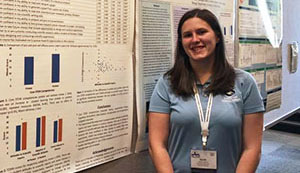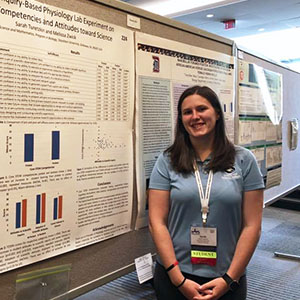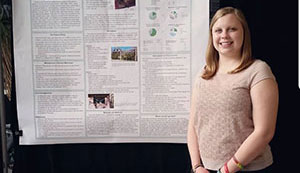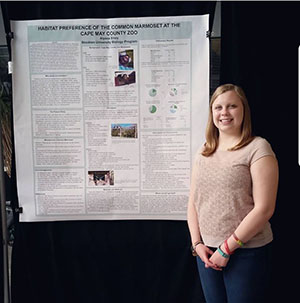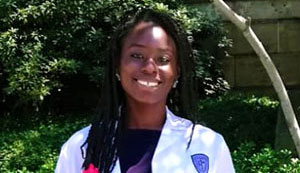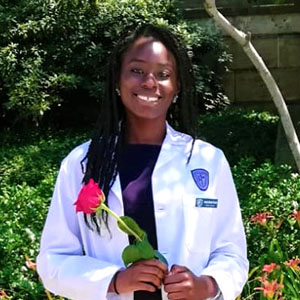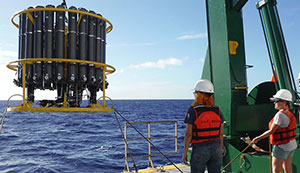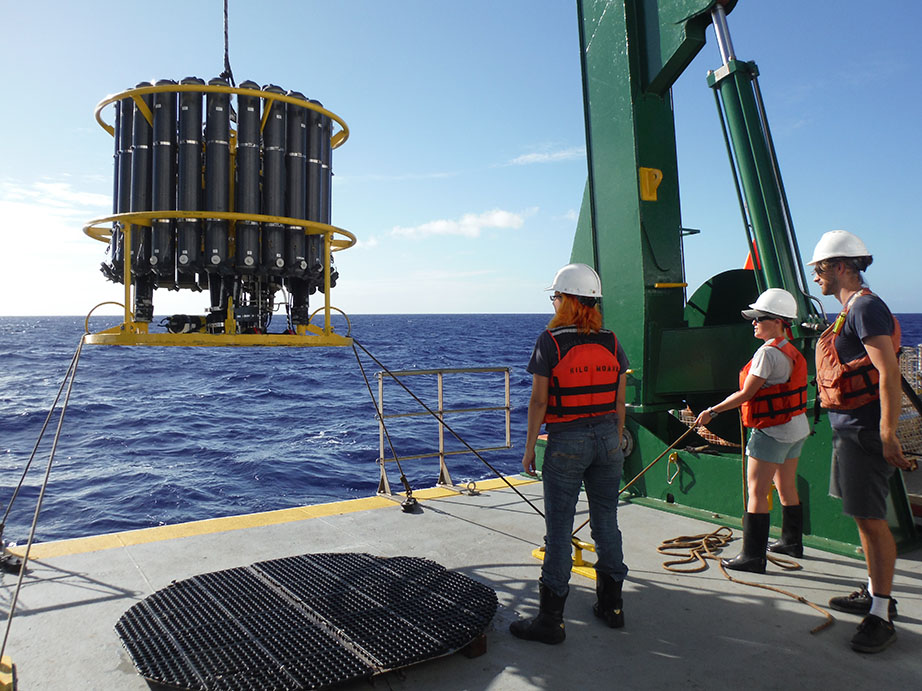NAMS Research Experiences for Undergraduates (REU)

The School of Natural Sciences and Mathematics (NAMS) recognizes undergraduate research as an integral part of a student's academic experience. Involvement in research will broaden your skill set and prepare you for the next step in your educational or professional career path.
The tools on this page will answer your questions about the benefits of undergraduate research and your role and responsibilities as a student researcher, as well as aid you in locating and securing a research position.
We hope you find the web page as a useful starting point and encourage you to explore the many different types of research opportunities that are available to you.
Why Do Research?
An REUs is a complimentary tool for conventional classroom learning. Students who assist in or conduct undergraduate research can conceptualize course material more effectively and have reported more positive undergraduate experiences.
The benefits of research reaches beyond academia and provides you with invaluable interpersonal and technical skills in preparation for graduate school or the workforce.
Contributing to research will help you to:

- have a better understanding of scientific knowledge and research process
- enhance understanding of your field of study
- develop critical thinking skills
- convey scientific ideas
- learn to interpret results
- learn to analyze data
- increase your self confidence
- balance independent and collaborative work
- gain real world experience
- define your interests
Additionally, research will allow you to:
- build rapport with faculty
- obtain letters of recommendation
- boosts resume and graduate school admissions
- make informed career goals
- establish credentials for curricula vitae/resume
- potentially publish in peer-reviewed venues
- present findings to scientific community
- secure employment in certain fields
Undergraduate research can aid you in...

Graduate School
Graduate school requires an investment of both time and money. REUs are an easy, short-term way of gaging whether that investment is right for you. Once you decide graduate school is the next step for you, undergraduate research experiences can help you get admitted to the program of your choice.
Most graduate schools require letters of recommendation from faculty who can substantiate a student's abilities. Working one-on-one or as part of a research team builds a genuine rapport between a student and mentor. Time spent working in the lab enables the faculty mentor the ability to attest to your skills and your future potential as a graduate student.
![]()
Medical School Admissions
In addition to a strong foundation in the sciences, applicants should posses personal attributes that can be obtained through collaborative research. Extracurricular activities such as research can enhance your medical school admission.
![]()
College is a time for exploration. Many students pursuing their undergraduate degree are unsure of the career path they want to take in life. Exploring research opportunities in different disciplines exposes students to many career fields and will provide you with a better understanding of your strengths and interests.
The work you do in an REU is work experience and can be listed on your resume as "Experience" if not paid, "Work Experience" if paid, or "Research and Publications" if the project was published or presented. Having experience will also give you an advantage over others with no experience when seeking employment or applying to graduate school.
Supplemental Video
In the following video, Biological Anthropologist, Dr. Bethany Usher, gives a TEDX talk at George Mason University about the benefits of undergraduate research and how it prepares you for the world.
What is Research Experience for Undergraduates (REU)?
Undergraduate research is a collaboration between a student and a faculty mentor which results in an original intellectual or creative contribution to a discipline through an investigation or inquiry. Studies have proven REUs are beneficial to students who participate in yearlong research. We encourage you to engage in research frequently and early in your academic career.
As an student researcher, you will have the opportunity to conduct your own research
or assist a faculty mentor with an ongoing research project. There are several different
options in which you can contribute to research:
Four Research Options:
Volunteer/Basic Support
Student contributes to faculty research on a basic level.

Student with intro level coursework or minimal knowledge of the field (i.e., freshman).
- Volunteer work can be done informally (i.e., no contract required).
- Great way to get foot in the door, especially without any experience.
- Application Deadline:
Advantageous to contact faculty mentor early in the semester.
Research Assistantships
Student contributes to faculty research on a more advanced level.
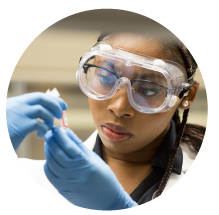
Available to students with upper-level (3000-4000 level) coursework experience.
- Available to students for credit.
- Contract required.
Stockton REU: Independent Study Form
External REU: See REU application information.
- Application Deadline: Advantageous to contact faculty mentor at least one semester prior to research semester.
Please check your portal during the Add/Drop period to ensure your internship or independent study is on schedule.
*Federal Work Study (FWS) funds may be available to be used towards Stockton research assistantships. Ask your faculty mentor or the Financial Aid Office for more details.
Independent Research Projects
Student works with faculty mentor to pursue their own research project in their area of interest and mentor's expertise.

For novice and advanced undergraduate researchers.
- Available to students for credit.
- Contract Required.
Independent Study Form
- Good way to get foot in the door without research experience.
- Application Deadline:
Advantageous to contact faculty mentor at least one semester prior to research semester. - Please check your portal during the Add/Drop period to ensure your internship or independent study is on schedule.
SIRE (Summer Intensive Research Experience)
Student contributes to faculty research outside of the regular school year.
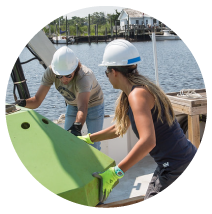
Available to students with upper-level (3000-4000 level) coursework experience.
- Credit based.
- Dependent on the REU (internal or external) may also include housing and travel.*
-
Contract Required:
Stockton REUs:
Independent Study FormExternal REU: See SIRE application for further information.
- Application deadline:
External summer programs are typically in February and March. Check each REU opportunity for specific deadlines. Internal SIRE projects should be at least a semester prior to research semester. - Please check your portal during the Add/Drop period to ensure your internship or independent study is on schedule.
*Some Stockton REU's funded through a grant may have stipends available. Inquire with faculty mentor.

Student Researcher Responsibilities
- Have the time required to assist or complete a research project before committing.
- Be present and on time for all scheduled meetings.
- Paperwork. Submitting for approval and taking to Bursar's and Student Records is your responsibility.
- Communicate early and often with your mentor on how tasks are progressing, do not sit idle or make assumptions if you reach a stumbling block.
- Be engaged and ask questions! Undergraduate Research is a learning experience and should peak your interest. You are not expected to have all the answers. Faculty mentors always want to help; don't be afraid to ask questions.
Faculty Mentor Responsibilities
Develop and Document Goals
Training & Constructive Feedback
Serve as a Resource
Challenge and Encourage
Participate Early and Often!
Every discipline of study within NAMS have their own research requirements for their respective degrees. Although a program may require a certain number of semesters of research or internships, you are not limited in the number, types of research experiences or discipline of study that you may contribute to.
Speak to your preceptor and get involved in research early in your academic career, and participate often!
Research Experience Overview
Locating an existing undergraduate research project or developing a new project takes time, investigation and planning. You should prepare to put in as much time and effort as you would when seeking employment opportunities.
Locating, Securing, and Funding An REU and Internship
Internal Experiences
You could locate faculty-led research projects within NAMS through the search tool below. Browse faculty research descriptions by program, through the faculty biography page and through our new podcast.
External Experiences
A sample guideline on when to look and what to think about when searching for an external REU.
Finding Funding
Funding comes from government sources, private industry, foundations and professional organizations. It may be specific to a particular discipline, field of study, or time of year.
Browse the resources below to locate grants or funding for your external REU.
- Stockton Student Research Funding Opportunities
- Funding is first come, first served basis.
- National Institutes of Health (NIH) Undergraduate Scholarship Program (UGSP) - Scholarships to students from disadvantaged backgrounds who are committed to careers in biomedical, behavioral, and social science health-related research
- IBP - Funding for undergraduates
- The Department of Energy (DOE) - Energy-related research
- Web Guru - Guide for undergraduate research funding
Did you know you may be able to use Federal Work Study (FWS) funds for an internal
REU?
Ask your faculty and/or Financial Aid for more information.
Steps for External Internships for Credit and REUs (Internal and External)
-
Get Advice
Make an appointment with a faculty member in an area of interest to gain advice on internships and research
-
Resume/CV
Prepare you resume/CV
-
Search for Opportunities
Learn what resources are available to help you find a great opportunity.
- Handshake
- Consider participating in the next Career & Internship Fair at Stockton
- External REUs and Local Internships
-
Complete Your Paperwork
InternshipsComplete and sign the Stockton Internship Form with your faculty mentor/sponsor once you are accepted into an intership positon.
- Submit signed paperwork electronically to NAMS-INDT@stockton.edu.
- The NAMS office will work with direclty with the business/research institute on any legal (affiliation agreements) documentation necessary.
- Once the forms are finalized, your paperwork will be forwarded to Student Records to be put onto your transcript and Blackboard as a course
Please check your portal during the Add/Drop period to ensure your internship or independent study is on schedule.
Independent Study (Internal REUs)
Similiar to above, once you locate a project to work on or initiate a new project with a faculty mentor, you will complete the Stockton Independent Study Form.
- Submit signed paperwork electronically to NAMS-INDT@stockton.edu.
- The NAMS office will work with direclty with Student Records to get processed and recorded on your DegreeWorks.
Please check your portal during the Add/Drop period to ensure your internship or independent study is on schedule.
Undergraduate research is a new step in your academic career. It is natural to be nervous when starting something that is new and unfamiliar.
We reached out to students and alumni who have contributed to research projects and asked them to provide you an overview of their experiences.
Here is what they have to say!
Meet Jessica!
Jessica Baez, Marine Science with a concentration in Oceanography alumna. Hear about her experience with research at Stockton and at her first conference.
Laurel Kelin
Environmental Studies
Feny Patel
Biology/Pre-Professional Studies
Shiela Asiago
Biology/Pre-Professional Studies
Joseph M. Burns
Environmental Studies
NAMS symposium
Majors in the school of NAMS are encouraged to conduct novel scientific research in collaboration with faculty mentors within their discipline. The NAMS Undergraduate Research Symposium is held annually and provides Stockton students the opportunity to present their work to the Stockton Community. Students present their work in the fields of Biochemistry, Chemistry, Biology, Marine Biology, Physics, Environmental Science, Geology, and Mathematics. The symposium is held in the Campus Center Main Event Room on the Galloway Campus. Refreshments are provided and all Stockton students, faculty and staff are welcome to attend.
Instructions for Presenters
SPRING 2026 TBA
-
Abstract Forms
Completed abstract forms should be sent to Nams.symposium@stockton.edu SPRING 2026 Date TBA
-
Posters
Should be composed in Microsoft Powerpoint™ and should be no larger than 42” high and 36” wide using the following Updated NAMS Symposium Poster Template | Tweetable animated gif of poster below.
- Students should contact their faculty mentors for instructions for printing posters.
- Posters will be printed at 42” x 42”. Please trim the extra border prior to display at the symposium. Poster cutter can be found in the A&S building in the 2nd floor computer lab.
-
Facutly Mentors
Instructions for Uploading Posters for Printing
- Participants can upload their final posters directly to this folder DEADLINE SPRING 2026 TBA:
- Once printed, I will move their posters to this view-only "printed" folder:
- Participants can check the status of their poster on this view-only spreadsheet:
- All posters will be placed in A&S 209. Participants are responsible for trimming any excess paper. Please check the room schedule to avoid class times.
-
Deadline
All files must be received by SPRING 2026 TBA to allow sufficient time for printing.
Previous Winners
2022 Syposium Winners
First Place: Chemistry
As Simple as Possible, but no Simpler: Reduced Models of the Bromite-Iodide Clock Reaction
Citta, Richard; Olsen, Robert
Clock reactions are kinetic phenomena characterized by the sudden appearance or disappearance of a substance after a well-defined period of time. In a large family of these reactions, clock behavior is visualized through an intensely blue solution becoming abruptly colorless as iodine disappears. A detailed mechanistic understanding of clock reactions lagged their discovery by about a century. Today, we can apply modern techniques to further our understanding of their complex nature. We have reinvestigated a mechanism of the bromite-iodide reaction made up of 15 species and 22 reactions. The bromite-iodide reaction is a subsystem of the bromate-iodide reaction, a clock reaction whose rate law is determined in a Chemistry IV laboratory experiment. We take a computational approach to simplifying the mechanism while maintaining clock behavior over a range of conditions. We have developed several reduced models via sensitivity analysis by eliminating redundant species, finding that clock behavior can be maintained when BrO−, IO−, and HOIO are individually removed from the model. Clock behavior is sustained, albeit over a somewhat narrower range of conditions, when combinations of these species are removed. Notwithstanding this narrower range, we have several simplified mechanisms in hand and will proceed to identify the most important reactions through rate sensitivity analysis.
Second Place: Biology and BCMB
The use of eDNA to Characterize Fish Populations in Marine Ecosystems
Aboagye, Marilyn; Bukhari, Nidaa; Patel, Janvi; Sylvestre, Keith; Norton, Emma; Stone, Jasmine; Harmer Luke, Tara
This project uses environmental DNA (eDNA) technology to identify various commercially and recreationally important fish populations from local marine and estuarine ecosystems. This technique results in significantly less disturbance to the aquatic environment when compared to traditional techniques like using nets and trawls to assess the population of fish inhabiting various ecosystems. Water samples were collected from several locations in and around the southern New Jersey coast, and whole genomic DNA was extracted from each sample. eDNA was PCR amplified using a variety of primers that target regions of the mitochondrial DNA from animal samples, in order to evaluate the effectiveness of each primer set. This work provides a foundation for further analysis of these samples using Next Generation Sequencing techniques
Third Place: Biology
Snakes outperform turtles and a crocodilian on functional assays of innate immune performance
Tan, Xin Rou “Natalie”
Disease is one of the primary threats to reptile populations, leaving them imperiled globally. However, modern immune research on these ectotherms has lagged behind endothermic birds and mammals. This imbalance leaves conservation biologists to act without a full understanding of reptile host-pathogen dynamics. Innate immunity involves cellular and acellular responses, including natural antibodies (NAbs) and the serum complement cascade. The acellular innate immune system is responsible for eliciting a nonspecific, fast-acting response against microbial infections. The goal of this experiment was to examine interclade variation in acellular innate immune function amongst three major extant reptile clades. Specifically, we characterized innate immune performance in two Squamates (Nerodia sipedon and Sistrurus miliarius), two Testudines (Chrysemys picta and Pseudemys rubriventris), and a Crocodilian (Alligator mississippiensis). We hypothesized that immune performance would vary among groups and reflect phylogenetic relationships. We employed immune performance assays which challenged individuals’ plasma against a gram-negative bacterium, E. coli, and mammalian erythrocytes in vitro. Bactericidal assays provide an assessment of complement mediated-lysis via the classical and lectin-mediated pathways. Erythrocyte hemolysis assesses complement-mediated cell lysis via the classical and alternative assays, and erythrocyte agglutination reflects the activity of NAbs. Complement performance of squamates was significantly better than turtles and crocodilians, which did not perform differently from each other. Our results support the hypothesis that the major reptile clades differ in complement performance and that differences may reflect broad phylogenic relationships among clades, therefore, highlighting the need for further exploring of interclade variation in immune function among reptiles.
Honorable Mention: BCMB and Biology
Phylogenetic Analysis of the Zona Pellucida Protein Complex and Zona Pellucida 3 (ZP3) in Vertebrates
Metzler, Matthew; Barbato, Guy F.
The zona pellucida (ZP) complex contains glycoproteins which are utilized in the formation of the “coat” surrounding oocytes. ZP glycoproteins have been shown to be involved in early fertilization events, as well as early embryologic development. The ZP3 gene codes for the predominant protein in the complex that surrounds the mammalian oocyte and plays a pivotal role in fertilization by mediating sperm binding in a species-specific manner, inducing the acrosome reaction, preventing polyspermy and protecting the embryo prior to implantation. Homology of the human ZP complex was examined and the evolutionary history of the ZP3 amongst vertebrates was investigated. ENSEMBL, MEGA-X, WebLogo, and UniProt aided in the visual representation of the homology and evolutionary history of the amino acid sequences within each vertebrates’ ZP3 alignment. High levels of evolutionary homology were seen amongst humans, other primates, and several classes of mammals. Radial phylogenetic trees were utilized to exhibit high conservation of ZP3 sequences amongst these groups as well as low conservativity amongst teleosts. The evolutionary conservation throughout vertebrates has reaffirmed the necessity and importance of the ZP3 in fertilization as the primary, although not exclusive, sperm receptor. As a key protein in reproduction, mutations in the gene may have distinct evolutionary disadvantages. Some vertebrates have acquired due to mutation, specifically indels, in the gene causing poor oocyte fertilization, small progeny numbers, and longer gestation periods.
Honorable Mention: Geology
Salt Marsh Sediment Accumulation Over a Small Spatial Area
Sarah Kelly
Salt marshes depend on sediment deposition and accumulation in order to survive through times of sea level increase. Sediment deposition in tidal salt marshes is well studied, but research typically focuses on larger areas, which could be less accurate for an entire mash surface. The goal of this research was to determine the spatial variability of sediment deposition and accumulation in a New Jersey salt marsh over a very small area. Sediment traps were placed in the mash at increments of 5 and 10 meters ranging over a 2800m2 squared area. Traps were visited daily, weekly, and at the end of the month to collect sediment, which was then dried and weighed. Results will discuss the correlations of sediment deposition in relation to time, air pressure, water level, and weather. Discovering how the sediment accumulation varies in the small area is important as it allows us to assess the precision on previously published sediment accumulation data.
2021 Virtual NAMS Symposium
Congratulations to our finalists and to everyone who worked so hard to complete their projects under extraordinarily difficult conditions this past year.
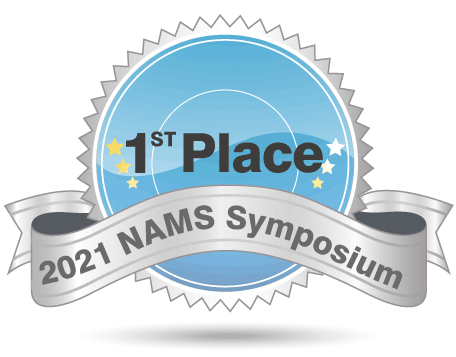
Kathleen Ngo '21
B.S. Biochemistry/Molecular Biology, B.S. Chemistry
Blue-shifted aggregation-induced emission enhancement (AIE) from fluorinated Sn hydroxyquinoline derivative complexes for organic light-emitting diode applications
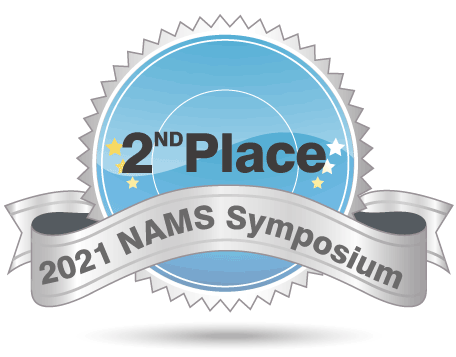
Matthew Mershon '21
B.S. Biology, Pre-Professional Studies, Minor in Chemistry
The Effects of Temperature on the Immune Performance of the Northern Red-Bellied Cooter (Pseudemys rubriventris)
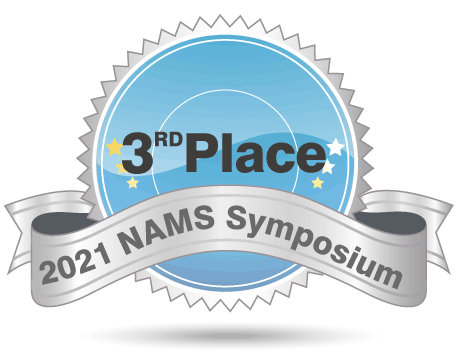
Cassandra Bennett '21
B.S. Geology
Inferring Forelimb Function in the Predatory Dinosaur Allosaurus
Danielle Marino, Samantha Brayton, and Anna Pfeiffer-Herbert
Estuary Bottom Type and Near-bed Velocities in Barnegat Bay
Jenna Horowitz, Lizbeilyn Ozoria, and Tara LH Luke
Use of eDNA to Characterize the Finfish Population of a NJ Coastal Dredge Hole
2019 Symposium Winners
First Place: Biology
Analysis of Soil Bacteria for Production of Antibiotics
Daniel Stoyko, Brian Neff, Vincent Anelle, Ellis Kirk, and Karen York
Due to the rise of antibiotic resistant bacterial pathogens, the need to discover new antibiotics has never been greater. One approach to the discovery of new antibiotics is through testing soil bacteria for the production of antimicrobial compounds. A typical 10 gram soil sample can contain up to 2 billion bacteria, each producing hundreds of different organic compounds. Considering that most of the known antibiotics are produced by soil bacteria, some of these compounds could have antimicrobial activity. In this study, soil bacteria from the New Jersey Pine Barrens were isolated, cultured, and screened against non-pathogenic bacteria closely related to common pathogens. Organic compounds were extracted from these soil bacteria and subsequently characterized using gas chromatography-mass spectroscopy (GC-MS). Of the compounds in the extract, some are known for their antibiotic activity (e.g. phenazine). The bacteria were identified by DNA sequencing of the 16S ribosomal RNA gene. Preliminary sequencing results suggest some belong to the genus Burkholderia. The following study improves our knowledge of antibiotics produced by soil bacteria. In addition, this study offers novel compounds with possible antibiotic activity.
Second Place: Biology
Analysis of double-stranded DNA break repair in haploid Saccharomyces cerevisiae under spaceflight conditions
Matthew Elko, Joseph Romanowski, and Daniel Stoyko
Due to the advancement of space age, all spaceflight-associated health risks should be studied in detail. Mistakes in double-stranded DNA break (DSBs) repair can lead to carcinogenesis. Previous studies reported contradictory results regarding the effect of microgravity on DSB repair. Cells have two major mechanisms that repair DSBs: homologous recombination (HR) and non-homologous end joining (NHEJ). HR requires a second, good copy of the damaged DNA for repair, while NHEJ adheres two DNA ends together. The goal of this experiment is to determine how spaceflight impacts NHEJ. To accomplish this goal, we will use the budding yeast Saccharomyces cerevisiae as an experimental model. Yeast have several advantages for this line of investigation: 1) Their NHEJ repair mechanisms are well conserved with humans; 2) Their fast proliferation rate generates sufficient material for cellular and molecular analyses; 3) Yeast can live as either diploids or haploids; haploids must exclusively use NHEJ to repair DSBs; 4) DNA damaging agents have been well-studied in this model. Using the confines of a NanoRacks MiniLab, we have engineered an experimental system which will expose proliferating haploid yeast to bleomycin, a DNA damaging agent. Preliminary experiments have identified an optimal bleomycin concentration (1-5 μg/mL) and a sufficient cell density (2.5 x 106 cells/mL). Using these parameters, we will measure NHEJ in both an experimental sample sent to the International Space Station and an Earth control. The results of these analyses will be crucial in forwarding our understanding of NHEJ in space.
Third Place: Marine Science
Tidal variability of estuarine circulation in Little Egg Inlet
Nicole Ertle and Jaclynne Polcino
Characterizing estuarine circulation is important for understanding larval dispersal, sediment transport and water quality. Estuarine circulation varies with buoyancy inputs, mixing from winds and tides, and changes in bathymetry. This study aimed to quantify momentum balances with changes in the tide in Little Egg Inlet, New Jersey, a major connection point between coastal bays and the Atlantic Ocean. During a 14-hour survey in Little Egg Inlet, an Acoustic Doppler Current Profiler (ADCP) was used to collect velocity data along set transects and a Sontek CastAway CTD was used to collect density profiles at several stations. Results presented here pertain to the Outer Inlet transect which spans from Little Beach (Pullen Island) to Holgate. Velocity data were used to determine vertical shear, and vertical density gradients were used to determine the buoyancy frequency. The Richardson number, a non-dimensional number that characterizes water column stability, was calculated from buoyancy frequency and vertical shear. Over the tide cycle there was variability in the tendency for the water column to go from turbulent mixing during the flood tide to slightly stratified conditions during the ebb tide. Overall net volume transport was landward (573.44 m3 s-1), and varied laterally across the inlet. The results add to our collective understanding of estuary-ocean exchange in well-mixed estuaries and can inform development of hydrodynamic models of the study area.
Honorable Mention: Biology
mTORC1 Activation Alters Neural Stem Cell Fate
Katie Nolan and Nicole DeSimone
In the postnatal brain, the subventricular zone (SVZ) is a niche that maintains neural stem cells and fosters ongoing neurogenesis. Previous studies have shown that neural stem cells in different regions of the SVZ are primed to produce specific types. For example, neural stem cells in the dorsal SVZ preferentially produce TH+ neurons. We examined whether neural stem cells in these areas differ in gene expression. RNA-Seq analysis demonstrated that Pax6 is enriched in dorsal neural stem cells, whereas Nkx2.1 is enriched ventrally. Immunostaining of the SVZ illustrates that Pax6 is restricted to dorsal regions while the mRNA is not. Driving protein translation by activating mTORC1 increased the protein expression of Pax6 and reduced Nkx2.1 expression in vitro. Additionally, mTORC1 activation can increase the number of Pax6+ cells in the SVZ. Taken together, our data suggest that terminal fates of neural stem cells can be modulated by protein translation control.
Honorable Mention: Chemistry
Synthesis and characterization of nickel and ruthenium complexes of primary amido-functionalized N-heterocyclic carbene ligands and evaluation of their catalytic activity for transfer hydrogenation
Tiffany Roach, Michelle Schmitza, Valkyrie Leacha, Dangkhoa Voa, Josef DeMarioa, Marcus Millera, Benny Chanb, and Steven Kalman
New nickel complexes of primary amido-functionalized N-heterocyclic carbene ligands have been synthesized, characterized, and evaluated for their catalytic activity for transfer hydrogenation, which is the addition of hydrogen across a π-bond using a dihydrogen surrogate. The nickel complexes show moderate catalytic activity for base-free transfer hydrogenation of ketones under aerobic conditions. Synthesis of half-sandwich ruthenium complexes featuring these ligands has also been explored. Current work is focused on studying the scope of the catalytic reactions with the nickel complexes, modifying the nickel catalysts for increased activity, and improving the synthesis of the ruthenium complexes. Once the ruthenium complexes have been successfully synthesized, they will be assessed as catalysts for base-free transfer hydrogenation in air.
Questions regarding the symposium can be directed to the conveners of the symposium, Dr. Craig Lind: NAMS.Symposium@stockton.edu
